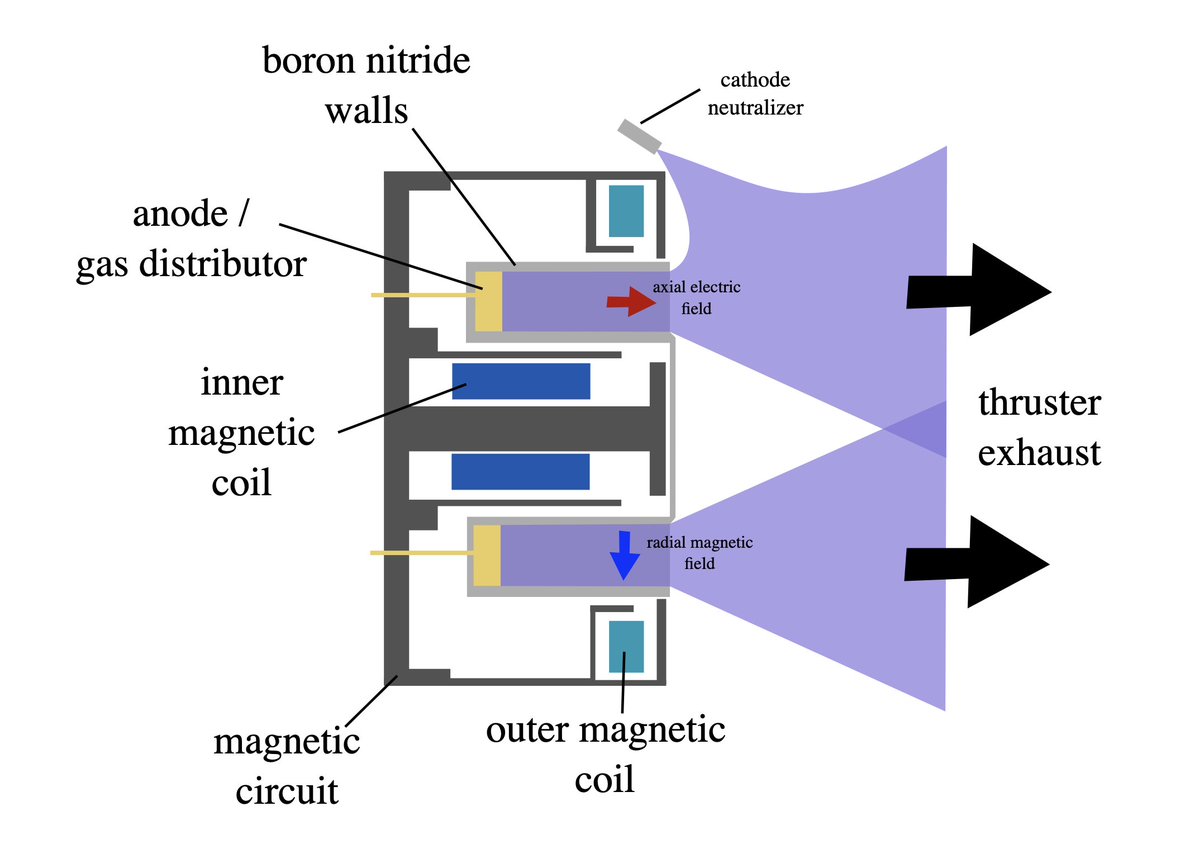收藏

分享

微信扫一扫
分享到朋友或朋友圈
Elon Musk
@elonmusk
The Starlink ion thruster is a marvel of engineering
@FutureJurvetson
Something old and something new in electric propulsion 🚀
The lower box is one the earliest spacecraft ion thrusters (from EOS circa 1962), and on top is a new arrival, a modern marvel from the SpaceX Starlink satellites used for on orbit maneuvering. SpaceX has mastered Argon Hall Effect thrusters, something no one else has been able to do. This affords a higher power density (4.2kW in 2.1kg) and much lower cost gas (about $10 per satellite) than prior designs using Krypton or Xenon. This is one of the early 2023 flight units for@Starlink V2 Mini, and the only one outside the company.
These thrusters are for in-space use only, and while they have relatively low thrust, they can run continuously for long periods with a very high ISP, and they are compact and reliable. They are commonly used for satellite station keeping and interplanetary missions, where this Argon thruster could reduce a 5-year transit time to months.
The backside of the SpaceX thruster shows how simple it is, with gas lines and wires for the cathode and electrode, insulated with Boron Nitride on the other side and permanent magnets for lensing of the streams.
Ben Longmier, lead designer of the SpaceX thruster, helped identify the old one I had in my collection. It appears to be “a development unit or early flight unit for a Cesium thruster from EOS (Electro-Optical Systems). The black component underneath the thruster looks to be the propellant tank and you can see several heaters wrapped around and brazed in place. A porous plug would have been used as a ‘valve,’ which takes advantage of a metal wetting and vapor pressure trick to throttle the propellant flow vs. temperature of the porous sintered metal plug.”
The final EOS thruster design is in the Smithsonian. It was successfully tested twice in space on flights of Air Force Blue Scout missiles in 1964.
Back in 1912, Goddard postulated that high-velocity streams of electrons and positive ions could be “energized” by solar-electric power supplies to provide thrust for an interplanetary spacecraft. He went further to suggest that the source of the ions could come from exposing alkaline atoms, such as mercury or cesium, to hot tungsten surfaces. He was spot on!
And more history from Ben: “One of the original Peenemunde rocket scientists on Von Braun’s team was Ernst Stuhlinger, who moved his family to what would become Marshall Spaceflight Center in Alabama. Ernst was close to Von Braun and worked on a lot of the early projects. In the later years of the US space program, both Ernst and Von Braun had dreams of expanding beyond the moon and sending craft deeper into the solar system, specifically Mars. One of Ernst’s concepts involved solar powered craft that would use Cesium ion thrusters to achieve a very high payload fraction delivered from Earth C3 to Mars injection orbit. This was an early solar electric propulsion concept that would ultimately never fly due to the wind down of budgets.”
And now, with the modern revival of a Mars program, the SpaceX Marslink satellites take us from dream to dream.
I borrow this phrase form the closing of Andrew Chaiken’s A Man on the Moon: “Historians of the far future may look back on Apollo and the missions that are yet to come as one great Age of Space Exploration. But in my mind’s eye it is a slow dissolve, from memory to anticipation, from what has been to what will be, from dream to dream.”



免责声明:本文版权归原作者所有,不代表MyToken(www.mytokencap.com)观点和立场;如有关于内容、版权等问题,请与我们联系。

